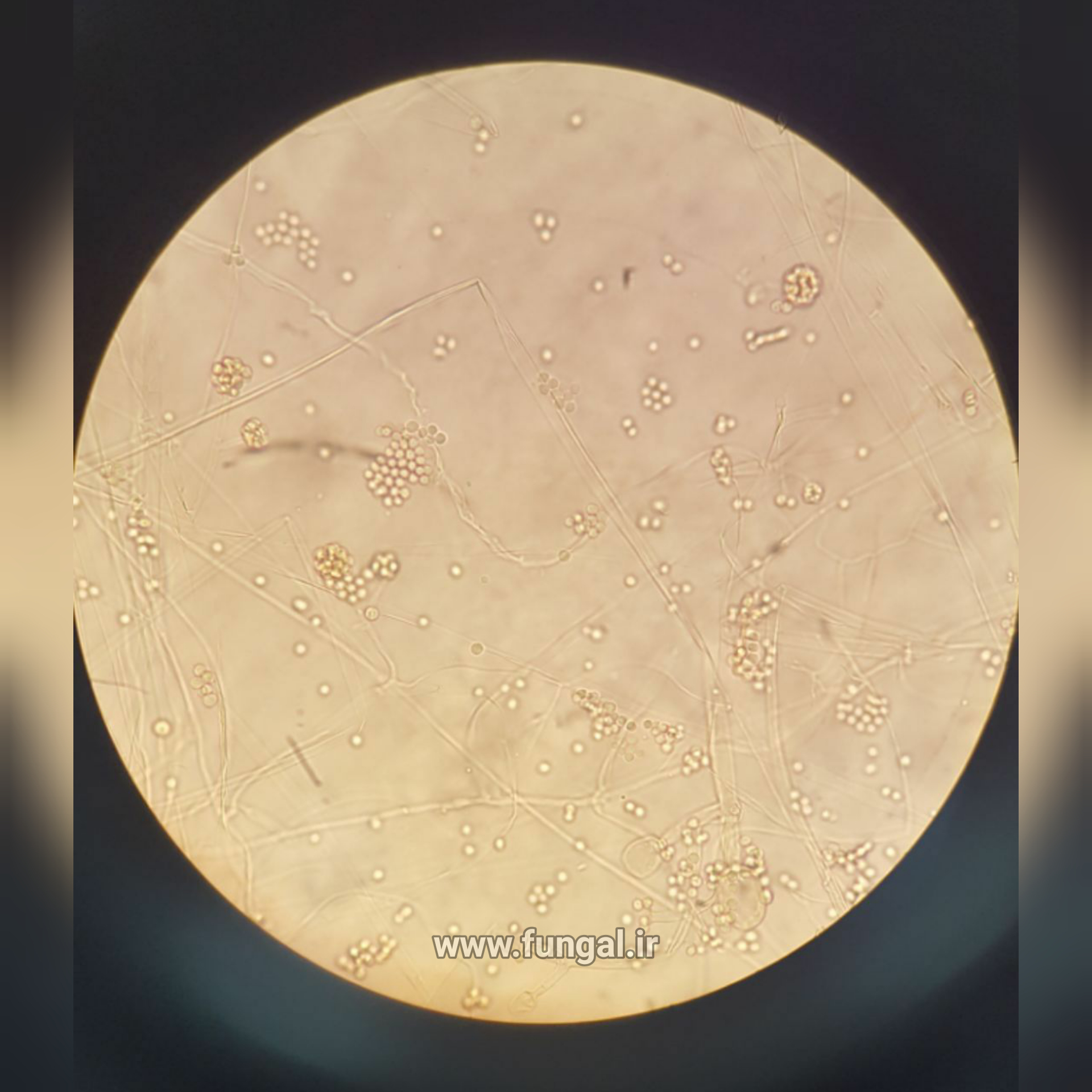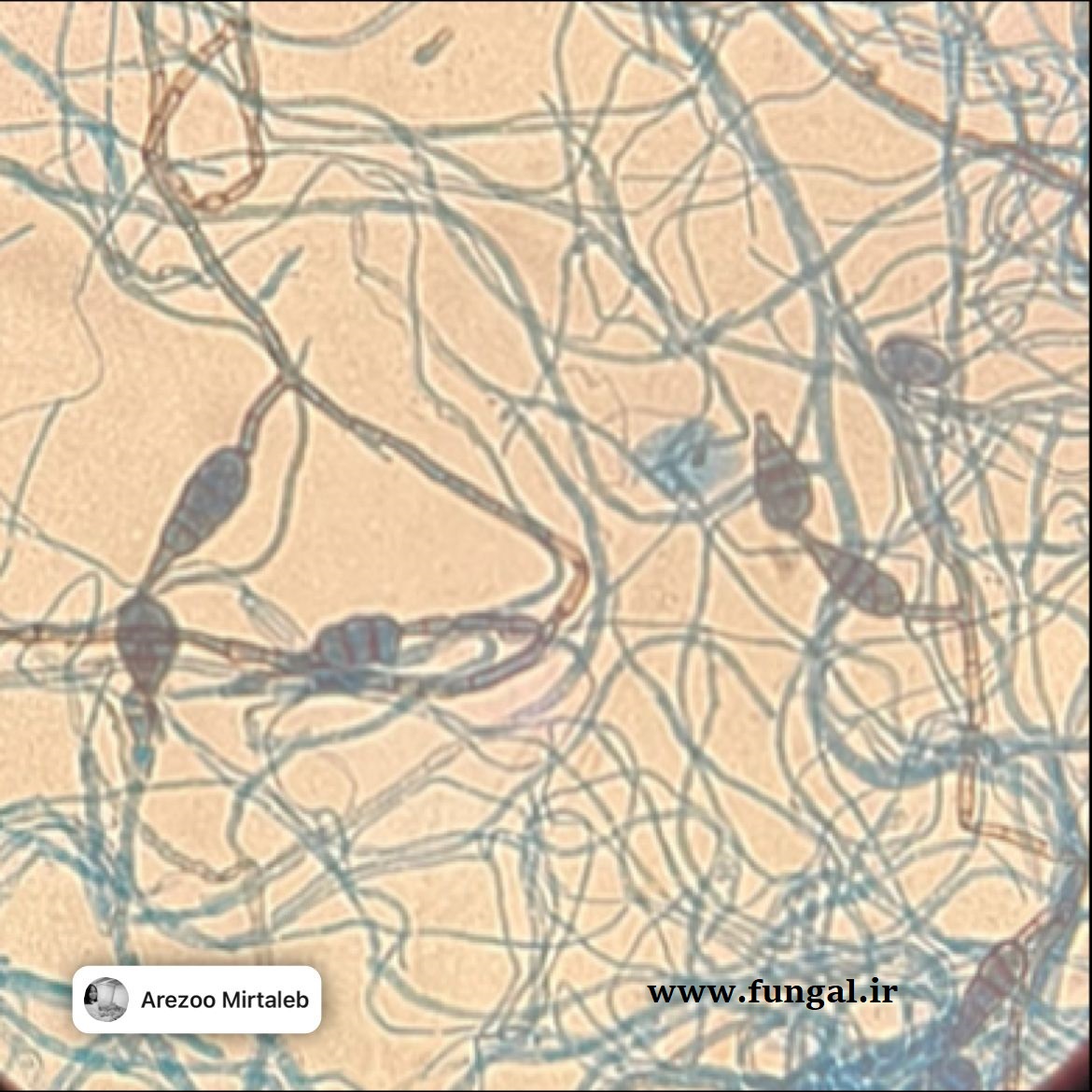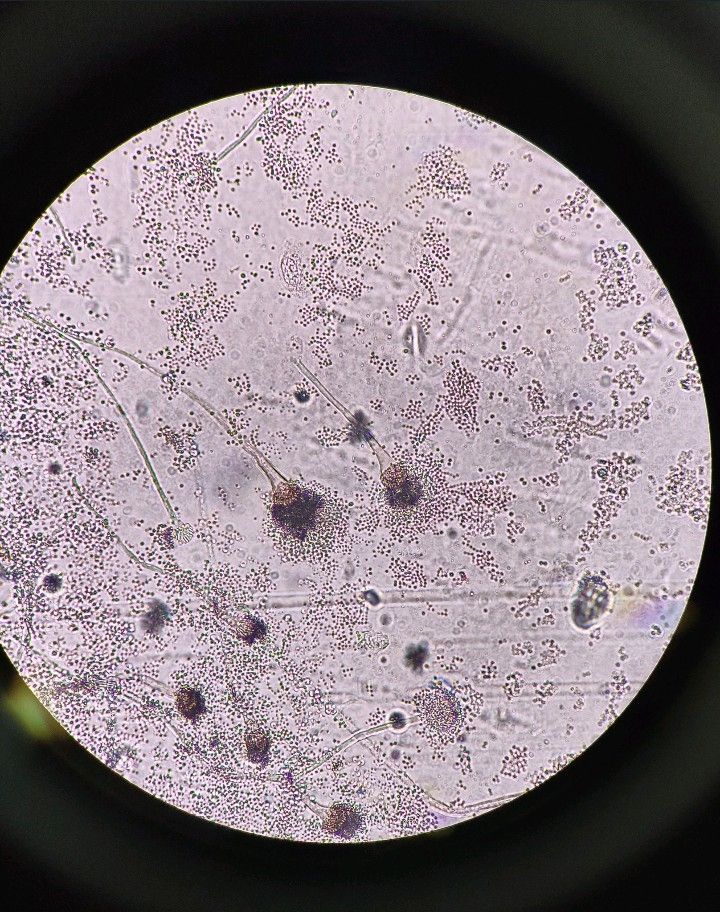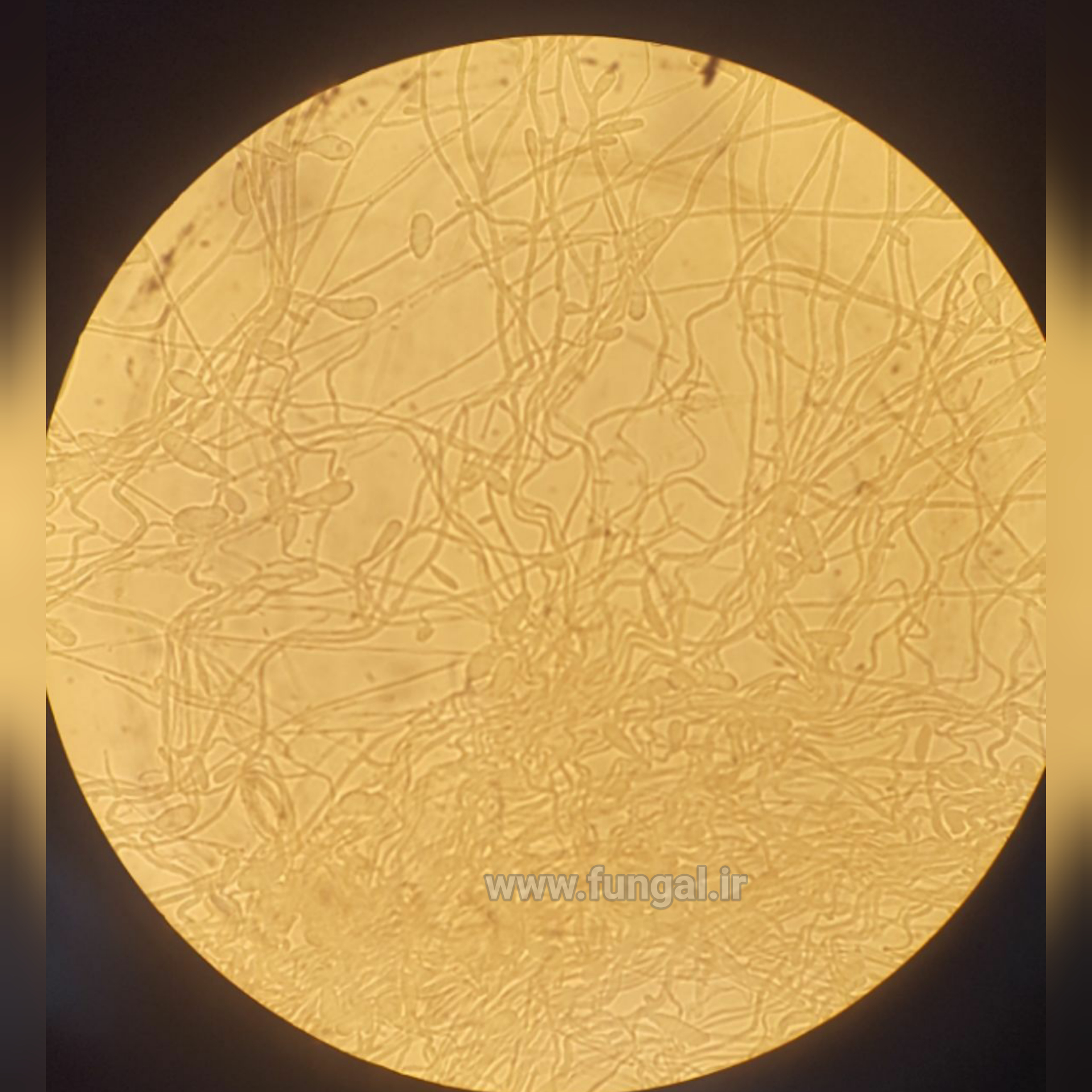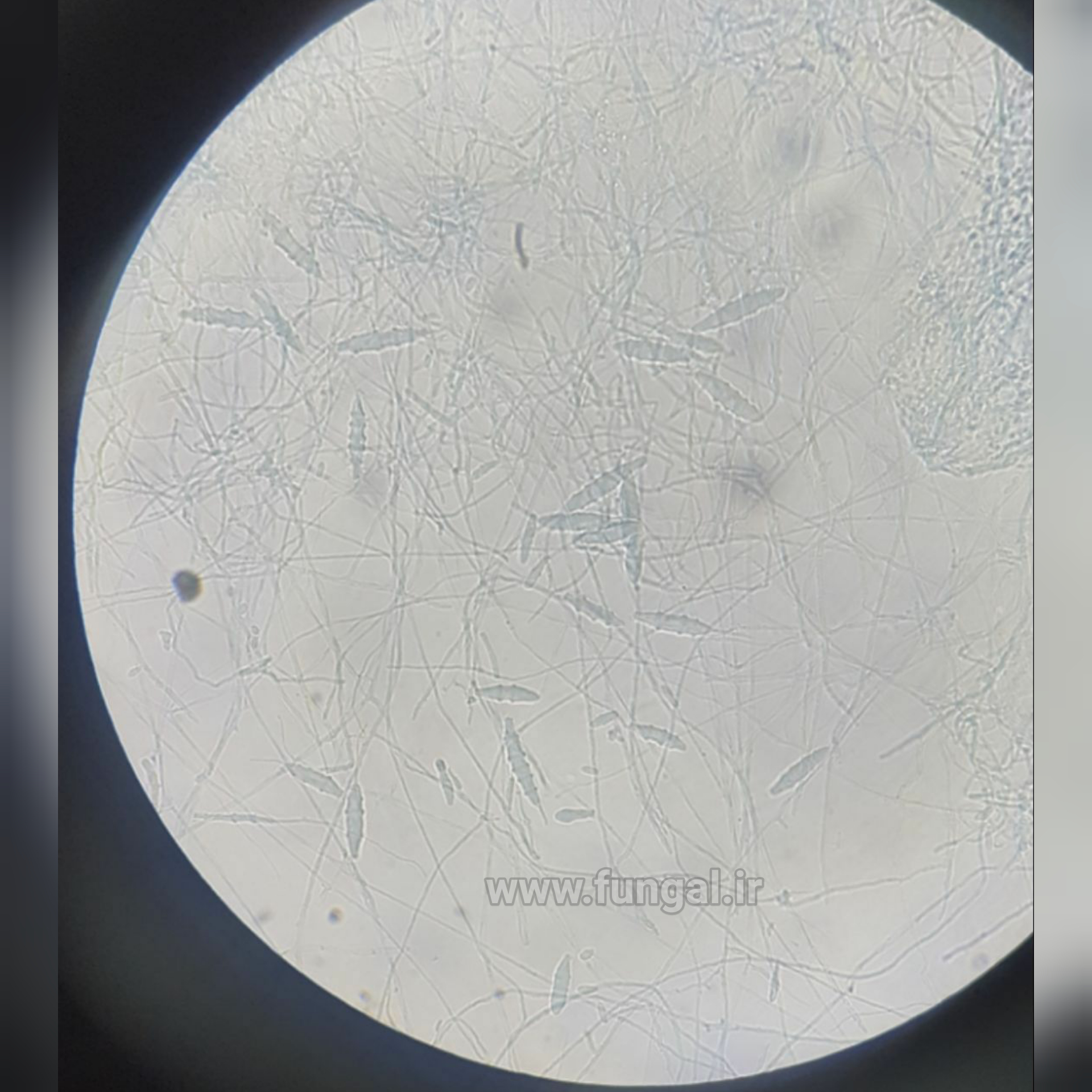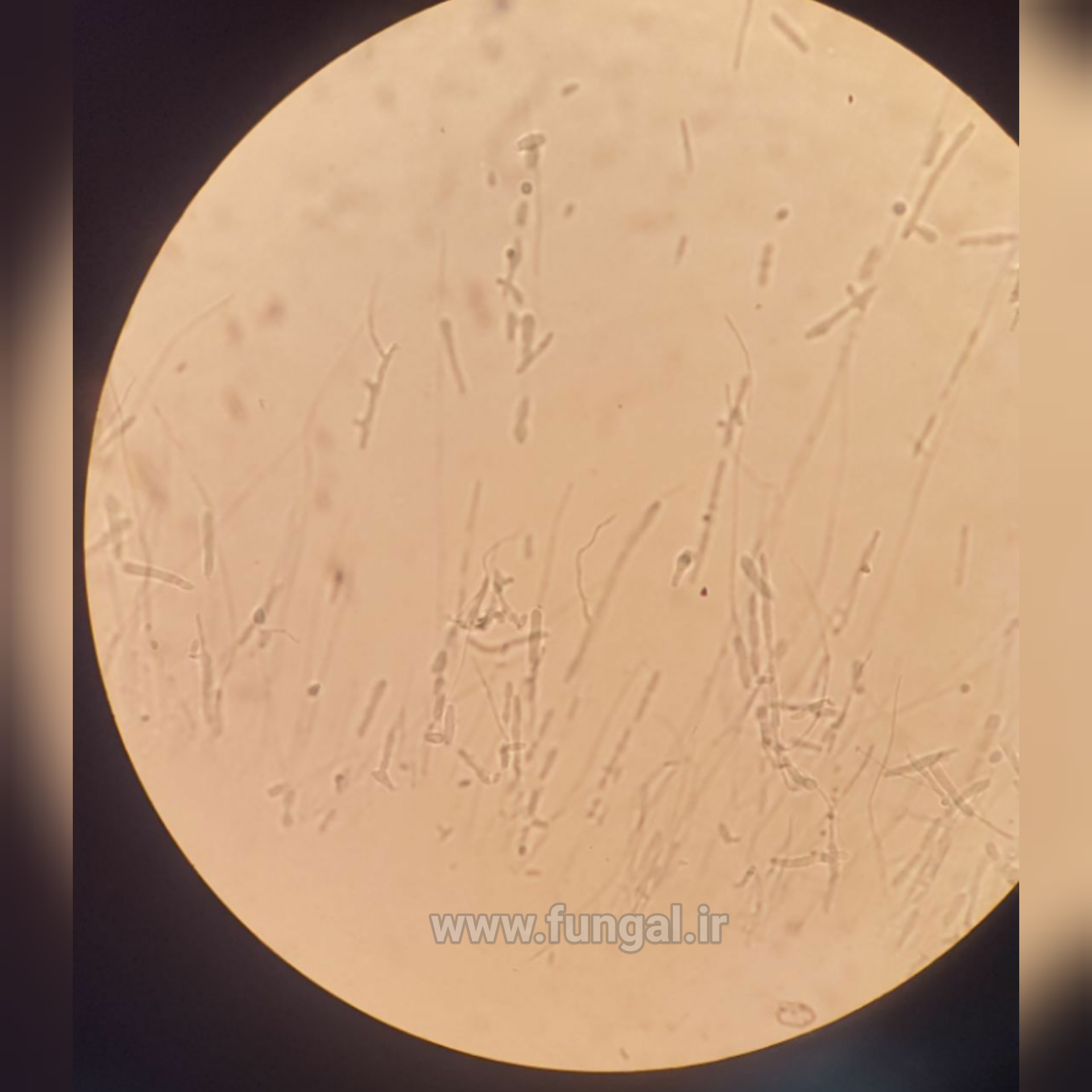Mucor is a microbial genus of approximately 40 species of moulds in the family Mucoraceae. Species are commonly found in soil, digestive systems, plant surfaces, some cheeses like Tomme de Savoie, rotten vegetable matter and iron oxide residue in the biosorption process.
Colonies of this fungal genus are typically white to beige or grey and fast-growing. Colonies on culture medium may grow to several centimetres in height. Older colonies become grey to brown in colour due to the development of spores.
Mucor spores or sporangiospores can be simple or branched and form apical, globular sporangia that are supported and elevated by a column-shaped columella. Mucor species can be differentiated from moulds of the genera Absidia, Rhizomucor, and Rhizopus by the shape and insertion of the columella, and the lack of stolons and rhizoids. Some Mucor species produce chlamydospores. They form mold with irregular non-septate hyphae branching at wide angles (>90°).
Mucor mucedo (genus species) use asexual reproduction. When erect hyphal sporangiophores are formed, the tip of the sporangiophore swells to form a globose sporangium that contains uninucleate, haploid sporangiospores. An extension of the sporangiophore called the columella protrudes into the sporangium. The sporangium walls are easily ruptured to release the spores, which germinate readily to form a new mycelium on appropriate substrates.
During sexual reproduction, compatible strains form short, specialized hyphae called gametangia. At the point where two complementary gametangia fuse, a thick-walled, spherical zygosporangium develops. The zygosporangium typically contains a single zygospore. Nuclear karyogamy and meiosis (sexual recombination) occur within the zygospores, which are thought to be long-lived and resistant to adverse conditions. They may germinate to form hyphae or a sporangium. Mucor includes both homothallic (self-compatible) and heterothallic species.
